Are you hesitating between your smartphone and the DJI Osmo Pocket 3 for your videos? The Osmo’s mechanical stabilization on 3 axes (pan, tilt, roll) offers a cinematic fluidity, much superior to the electronic stabilization of your phone. In low light, its 1-inch sensor captures more light for sharper images. With ActiveTrack, it tracks your face automatically, ideal for vlogging. Compactness and complementary accessories make it a creative ally, but the smartphone remains the king of simplicity. For dynamic and professional shots, buy the DJI Osmo Pocket 3.
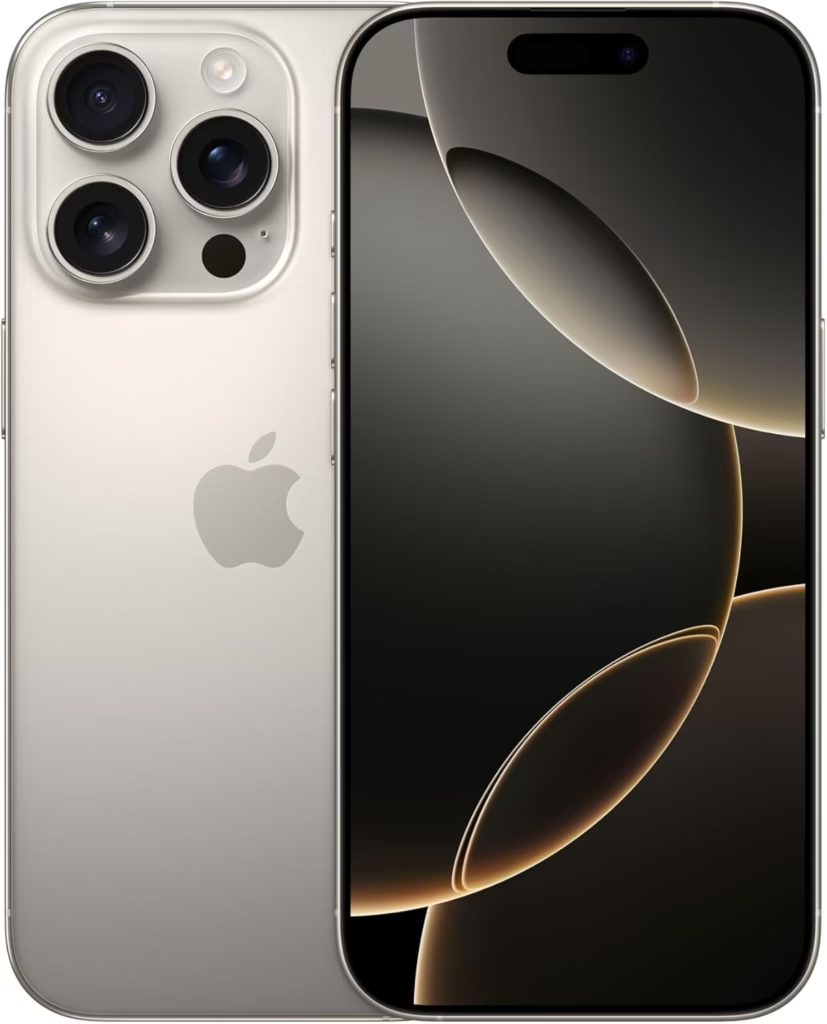
Does your smartphone shake as soon as you film while walking? Need DJI Osmo Pocket smartphone comparison to decide? The Osmo Pocket’s mechanical stabilization turns your videos into a smooth roller coaster, where your phone struggles to keep up. In low light, the Pocket 3 captures up to 2x more light than the majority of mobiles. And its ActiveTrack 3.0 automatically follows you for vlogs without settings. Discover in 3 key points why choosing between the tactile practicality of your mobile and the robotic precision of the DJI gimbal can change everything for your creations.
- Stabilization: the point that changes everything between the Osmo Pocket and your smartphone
- Image quality and creative modes: beyond stability
- Everyday experience: the real test for a beginner
- Portability, battery life and accessories: the practicalities you shouldn’t forget
- Verdict: So, Osmo Pocket or smartphone, which one should you choose in 2025?
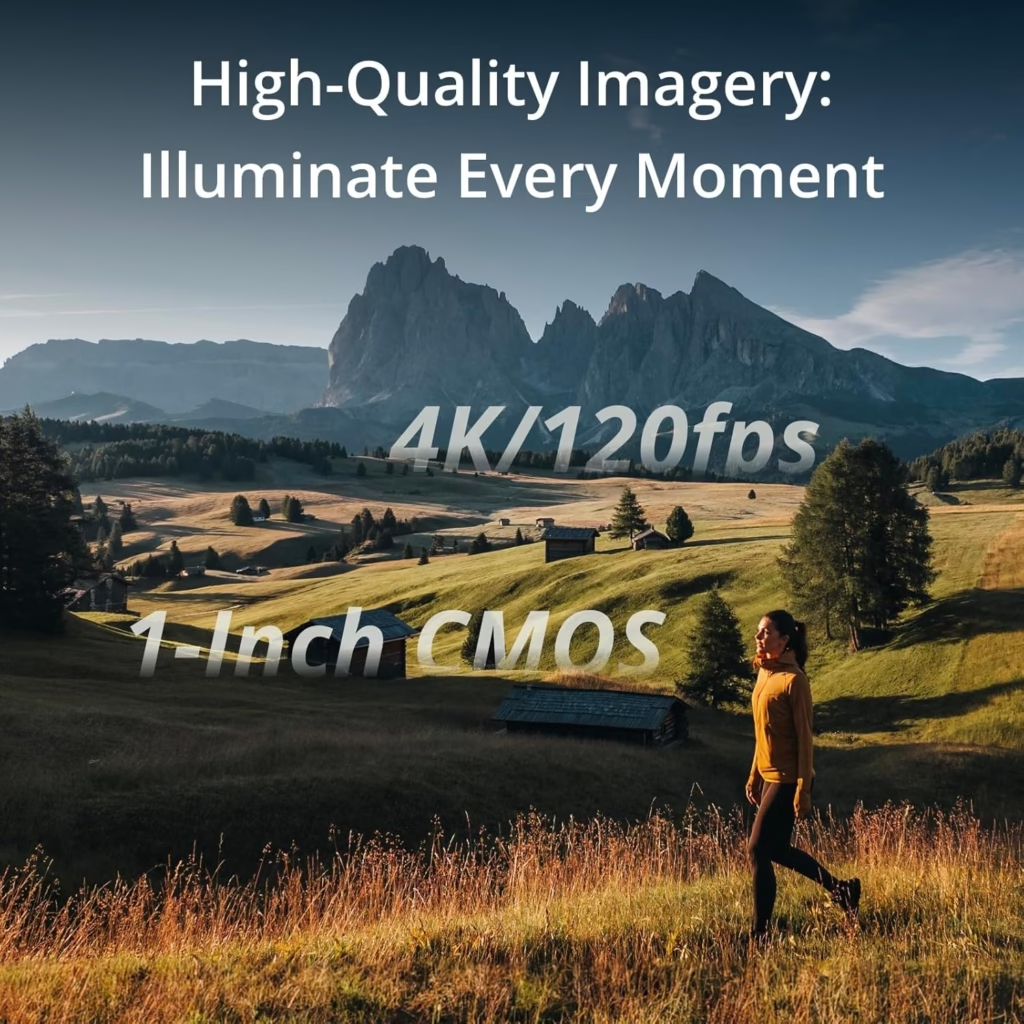
Stabilization: the point that changes everything between the Osmo Pocket and your smartphone
The magic of mechanical stabilization: what exactly is it?
Imagine a robotic arm that keeps your camera steady, no matter how you move. The Osmo Pocket uses a 3-axis gimbal (pan, tilt, roll) that physically compensates for shaking. Its motors adjust in real time: even when walking, the image remains straight. The camera floats like on a cloud, independent of your gestures.
Mechanical stabilization is hardware, not software. The result: zero loss of quality. You can zoom in, shoot in 4K, the video remains fluid. With an accuracy of 0.005°, it is ideal for dynamic movements. Note: The Osmo Pocket connects to the DJI Mimo app to enable subject tracking.
And the stabilization of my smartphone in all this?
Your smartphone uses Electronic Stabilization (EIS), an intelligent crop. The device zooms in slightly to smooth out shakes. Disadvantages: loss of field and “frozen” effects, especially in low light. The high-end models also include optical stabilization (OIS) limited to 1 or 2 axes.
Even with these technologies, your phone doesn’t compete with the 3-axis gimbal. For static videos (selfies, interior), it’s enough. Note: some smartphones, such as the iPhone 16 Pro Max, are compatible with the DJI app to control an external stabilizer. A smartphone + Osmo Mobile combo offers stabilization close to the Osmo Pocket, but more bulky.
The concrete impact on your videos: fluidity above all
Compare two cases: a vlog in the street or a child running. With your smartphone, the steps create micro-jumps. With the Osmo Pocket, the image glides as if on rails. When hiking, movements are absorbed. In FPV, the camera follows smoothly.
It all depends on your needs. For wedding or travel, the Osmo Pocket justifies its purchase thanks to its portability and gyroscopic stabilization. For everyday use, the smartphone remains practical. Smartphone advantage: always within reach. Osmo advantage: dedicated to video, with a 120° angle and 2h30 of autonomy. Choose according to your priority : motion quality or multifunctionality.
Image quality and creative modes: beyond stability
The sensor: why its size is crucial in low light
Want to film grain-free in a subdued atmosphere? The DJI Osmo Pocket 3’s 1-inch sensor captures more light than a standard smartphone sensor. The result: cleaner videos indoors or at dusk, where your phone would show signs of fatigue.
Good news: the size of the sensor changes everything. While a smartphone uses microscopic sensors (often smaller than 1/1.5 inch), the Osmo Pocket gains in clarity and detail. You keep natural colors and less digital noise.
Case in point: an iPhone 14 Pro has a 1/1.28-inch sensor. With its 1-inch sensor, the Osmo Pocket captures 2.5 times more light. In low light, the difference can be seen with the naked eye: more sharpness, less blur and controlled shadows.
Smart Modes: DJI’s ActiveTrack, a real plus for filming yourself
Need to film yourself in motion without an assistant? ActiveTrack is your ally. You touch your face on the screen, and the carrycot follows your figure automatically. There is no risk of walking or dancing out of the frame.
Smartphones are giving it a try, but their tracking is limited to an approximate digital zoom. With the Osmo Pocket, the camera physically rotates to keep your subject in focus. Perfect for vlogs or tutorials on the go.
ActiveTrack adapts its tracking to your activity. In Race mode, it follows a fast-paced subject. In Portrait, it frames your face even if you turn your head. A smartphone remains limited : it loses the subject if you move too fast.
Timelapse, Motionlapse, Slow Motion: Creativity Made Easy
Dreaming of time-lapse videos with smooth motion? The Osmo Pocket’s Motionlapse transforms your movements into dynamic sequences. The gimbal rotates in rhythm during recording, unlike smartphones that require third-party apps.
Both devices slow down, but the Osmo Pocket outperforms thanks to its dedicated processor. You get 4K at 120fps compared to 1080p on most smartphones. For professional effects, the DJI solution remains more accessible.
The Motionlapse requires 3 steps: select the starting point, validate the end, and let the Osmo Pocket control the gimbal. A smartphone requires additional tools to even out the shaking. As a result, you save time.
For slow motion, the Osmo Pocket offers a Slow Motion Boost. This mode reduces speed blur with a real-time algorithm. An iPhone or a Galaxy do not offer this automatic correction, forcing you to redo the manual takes.
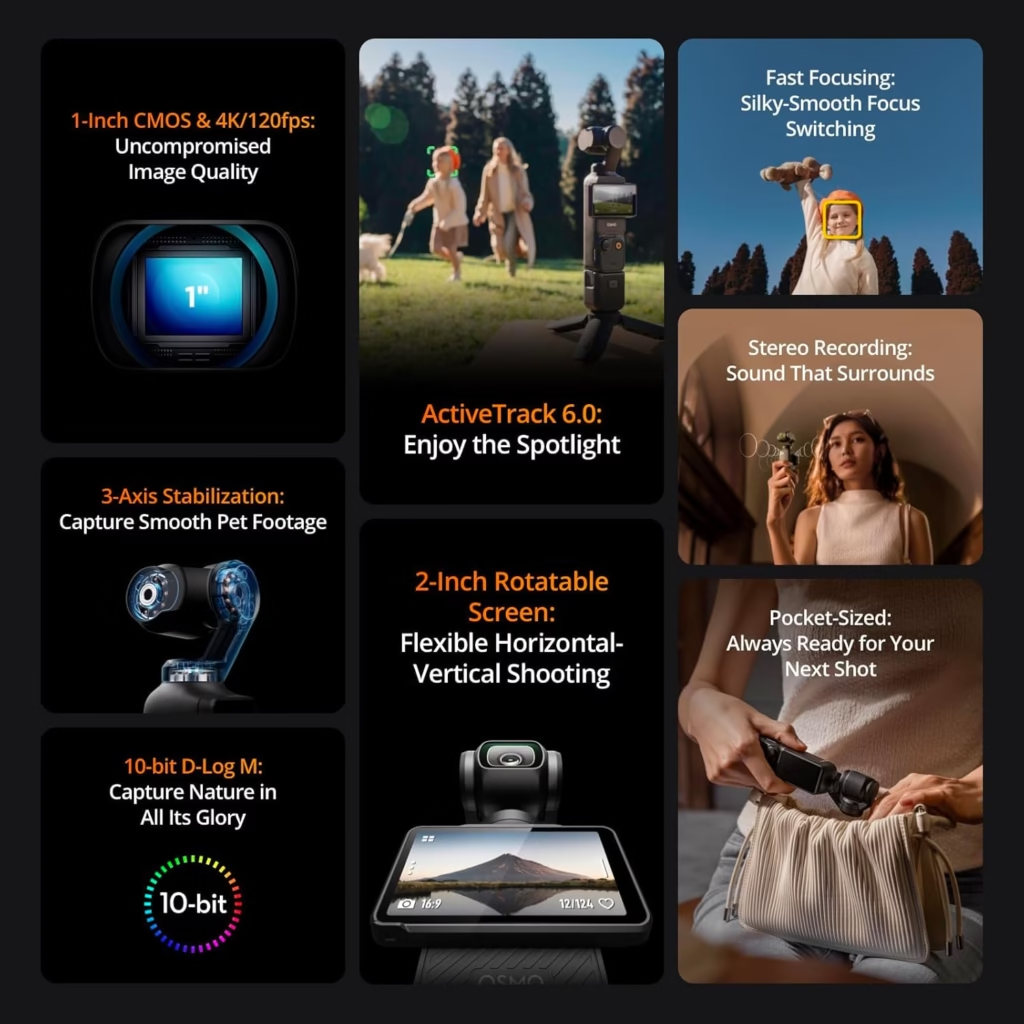
Everyday experience: the real test for a beginner
Getting started: the familiar simplicity of the smartphone in the face of a new tool
Want to film without thinking? The smartphone wins from the start. You open the camera, you touch the screen, and off you go. No learning curve, just instinctive use.
On the Osmo Pocket side, it’s different. It invites you to discover a joystick, touch menus and dedicated buttons. Need 5-10 minutes to figure out the basics? It’s fast, but it’s still an additional step. The good news is that the gyroscopic stabilization compensates for this slight effort.
What to expect? A smartphone remains immediate, the Osmo Pocket rewards patience. None is perfect, but each serves clear purposes.
The DJI Mimo App: Essential to Unleash Your Full Potential
The Osmo Pocket shines, but it depends on the DJI Mimo app. Want to adjust the manual settings? Calibrate the stabilizer? Recover videos in 4K? You have to launch the app.
Why is this link crucial? Without it, you get stuck with the basic settings. By connecting your smartphone, you gain a magnified viewfinder, creative modes (ActiveTrack, Spinshot), and even audio control with the DJI Mic 2.
A smartphone, on the other hand, remains autonomous. No need for a third-party app to film. This is an obvious advantage if you want to skip the steps.
From filming to sharing: comparing transfer steps
The objective: to publish a video in 10 minutes ? The smartphone is your ally. You film, you open Instagram, you share. No intermediary, it’s direct.
With the Osmo Pocket, the process is longer. You need to connect the device to your phone via DJI Mimo (via Bluetooth, Wi-Fi, or OTG on some models), wait for the transfer, and then record the video. 5 to 15 minutes more for a beginner.
A concrete example? If you shoot a spontaneous moment (like a sunset), the smartphone becomes more responsive. For prepared videos (travel vlog, tutorial), the Osmo Pocket justifies the processing time thanks to its pro stabilization.
Here’s a clear summary of the strengths of each device:
- Smartphone : Simplicity, speed of sharing, battery life.
- Osmo Pocket : Gyro stabilization, superior video quality, DJI Mimo compatibility for advanced settings.
It’s up to you to choose according to your needs. Want to capture the essentials? The smartphone is enough. Are you looking for ultra-stable images for a creative project? The Osmo Pocket is worth a visit. And there you have it : each tool has its place, without value judgment.
Portability, battery life and accessories: the practicalities you shouldn’t forget
Choosing between a smartphone and the DJI Osmo Pocket also means weighing the practical advantages. For beginners, these details can swing the decision depending on their lifestyle and goals. Need to film on the go? To capture spontaneous moments? Think carefully before you start.
Compact and portable: one more device in your pocket
The Osmo Pocket 3 weighs just 117g and fits in the palm of your hand. Perfect for light travel or hikes where every gram counts. But be careful: it’s an additional device to take with you, so to recharge and think about. The smartphone, on the other hand, is always there, ready to film as soon as inspiration strikes. A reflex for improvisation enthusiasts!
Battery life: who films the longest?
The Osmo Pocket 3 lasts 166 minutes in HD recording, which is a good outdoor vlogging session. With the battery handle (79 USD), you gain 62% more battery life: ideal for long shoots. The smartphone, on the other hand, drains its battery in 30 to 45 minutes of filming. What if you run out of energy? Your phone is still useful for a call or an emergency card, unlike the dedicated camera.
The accessories budget: the ecosystem around the camera
To compete with the pros, the Osmo Pocket requires an investment. Here are the essentials to unlock your potential :
- DJI Mic 2 Microphone : Capture clear audio on the go ($349 USD) A must for vloggers.
- Magnetic ND Filters : Control light for cinematic effects ($59 USD). Essential in direct sunlight.
- Osmo Mini Tripod : Stabilize fixed shots or timelapses ($16 USD). Handy for tutorial videos.
- Carrying bag : Protect the device and its accessories ($49 USD). Avoids scratches and forgetfulness.
The total jumps to $686 for all premium accessories. A budget to compare with the free apps on your smartphone, such as built-in filters or microphones enhanced via third-party apps. For tight budgets, the smartphone remains a smart ally.
For intensive use, the Osmo Pocket 3 cage case enhances strength and compatibility with other mounts. A detail that counts for those who are adept at adaptability.
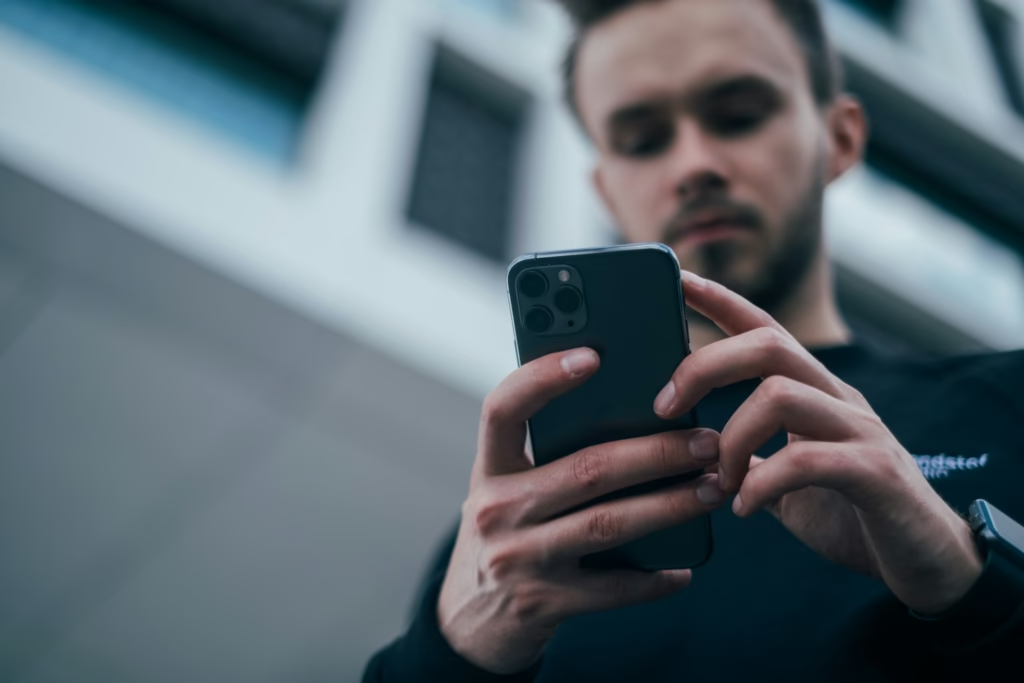
Verdict: So, Osmo Pocket or smartphone, which one should you choose in 2025?
In what cases is your smartphone more than enough?
Do you want to capture a spontaneous moment without looking for your equipment? Your smartphone is there, always ready. Avoid cluttering yourself if you mostly share family memories or Instagram stories. Recent sensors work wonders, especially in sufficient light.
Instant sharing? It’s automatic. You don’t need to transfer files or wait to show your videos. For simple needs, your phone remains the smart option without investing a penny. Need a quick assembly? Apps such as CapCut or iMovie are directly accessible. You film and share in 3 clicks.
When does the Osmo Pocket become your best ally?
Do you dream of videos that move with you without shaking? The Osmo Pocket stabilizes like a pro with its mechanical carrycot. Perfect for travel vlogs, kids in action, or smooth shots outdoors. Fluidity gained? A visual shock compared to the software stabilization of smartphones.
And if you want to get close to cinema quality, the Osmo Pocket 3 captures in 4K HDR with clear sound thanks to its built-in mic. The DJI Mimo app even lets you add effects in real-time. A reflex for movement enthusiasts. Compatible with the DJI app, you can remotely control the settings or activate the ultra-precise subject tracking (ActiveTrack). A reflex for videos that stand out from the crowd.
The recap at a glance: DJI Osmo Pocket vs Smartphone
| Characteristic | Smartphone | DJI Osmo Pocket |
|---|---|---|
| Stabilization | Electronics (EIS) / Optics (OIS) | 3-axis mechanics |
| Fluidity in motion | Fair to Good | Excellent (cinema effect) |
| Low-light quality | Depends on the model (often average) | Very good (especially Pocket 3) |
| Ease of use | Excellent (familiar) | Good (slight learning) |
| Subject Tracking (Vlog) | Basic | Excellent (ActiveTrack) |
| Instant sharing | Yes | No (requires transfer) |
| Versatility | Excellent (Photo/Video/Apps) | Good (specialized video) |
| Traffic congestion | None (already on you) | Low (but one more device) |
In short: the smart choice for the beginner designer
You see, there is no “best” device, just the one that fits your projects. The smartphone remains king for immediacy, the Osmo Pocket opens the doors to video creativity. Need a first step towards the pro? The Osmo Pocket deserves your attention.
The Osmo Pocket’s gyro stabilization transforms your movements into smooth shots, ideal for dynamic videos. Its compact size also makes it perfect for light travel. But the smartphone remains unrivalled for simplicity : a single device to do it all, without having to transfer files before sharing.
Click here if you want to test the DJI Osmo Pocket 3. You gain in quality without getting lost in complex settings.
The Osmo Pocket mechanically stabilizes your videos and captures light well. Great for motion, vlogs, or timelapses. The smartphone is practical for instantaneousness, but for a professional look, choose the Osmo. Ready to take the plunge ? Buy the DJI Osmo Pocket 3 and unleash your video creativity !
FAQ
Can you use the Osmo Pocket with your smartphone?
Good news: yes, but with a few steps to follow! The Osmo Pocket connects to your phone via the DJI Mimo app. You need to connect both devices via Bluetooth or with a USB-C cable (depending on the model). Then, the app opens up all the advanced functions for you: settings, editing, or video transfer. A little tip: remember to download the app before starting, it is the one that makes the link between the two tools!
What are the alternatives to the Osmo Pocket to start with?
The smartphone remains an obvious alternative, especially for its simplicity of use. Otherwise, action cameras (like the GoPro) or phone stabilizers (like the Osmo Mobile) are also options. For ultra-stable videos, mechanical gimbals (like the DJI RS) fit heavier devices. But if you’re looking for a mix of quality and compactness, the Osmo Pocket stands out for its 3-axis gimbal and intuitive handling.
When was the DJI Pocket 3 released?
The DJI Pocket 3 arrived in 2024, marking a key evolution with its 1-inch sensor and improved battery. A real + for beginners who want more quality without complicating their lives. If you’re hesitating between models, the Pocket 3 is the newest yet.
Is the DJI Osmo Pocket 4 coming soon?
No official announcement yet, but DJI could release a Pocket 4 in 2025, as it does every year. In the meantime, the Pocket 3 remains a safe bet. If you want to get started, it’s better to opt for the current model to avoid waiting times.
Do you need a SIM card for the Osmo Pocket 3?
No, the Osmo Pocket 3 doesn’t have a SIM card reader. It uses a microSD card to store your videos and photos. You can connect it to your smartphone via the DJI Mimo app to transfer your files. Practical to avoid handling the card every time!
What is the latest DJI Osmo Mobile available?
The most recent is the Osmo Mobile 6, which is designed for smartphones. It adapts to recent models, with smooth stabilization and ActiveTrack compatibility. If you want a stabilizer for your phone, it’s a good choice for dynamic videos without shakes.
What is NPC Pocket?
Maybe it’s a confusion ! DJI does not have an “NPC Pocket”. On the other hand, the ActiveTrack is a key feature of the Osmo Pocket. It allows you to automatically track a subject (like your face) while you’re filming. You touch the screen, and the camera follows it in motion. It’s great for vlogs or tutorials.
Which app to use with the Osmo Pocket?
The must-have app is called DJI Mimo. It allows you to control the device, access creative modes (timelapse, slow-mo), and transfer your videos. You can also find tutorials and editing templates for videos ready to share. A reflex to take as soon as you unpack!
Which SD card to choose for the Osmo Pocket 2?
For the Osmo Pocket 2 (and the 3), favor microSD cards tested by DJI to avoid bugs. UHS-I Class 10 or V30 models are ideal. Avoid cards that are too cheap that could slow down registration. Tip: Check the compatibility lists on the DJI website before purchasing.

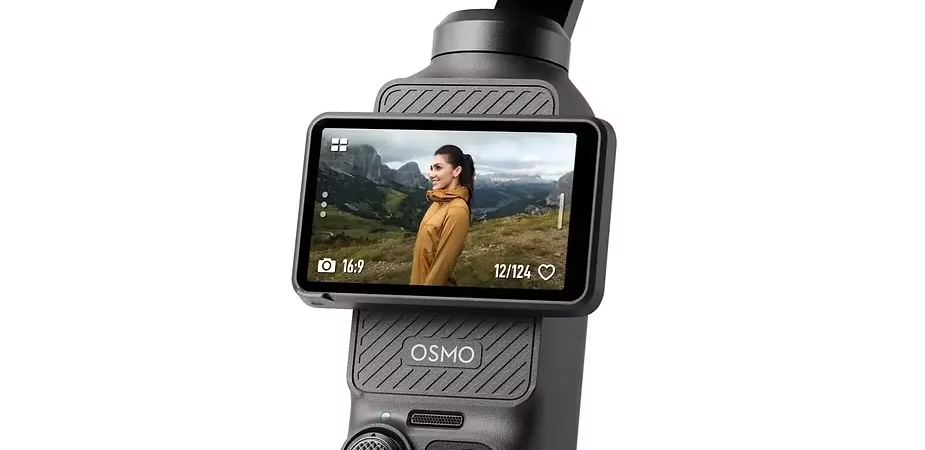
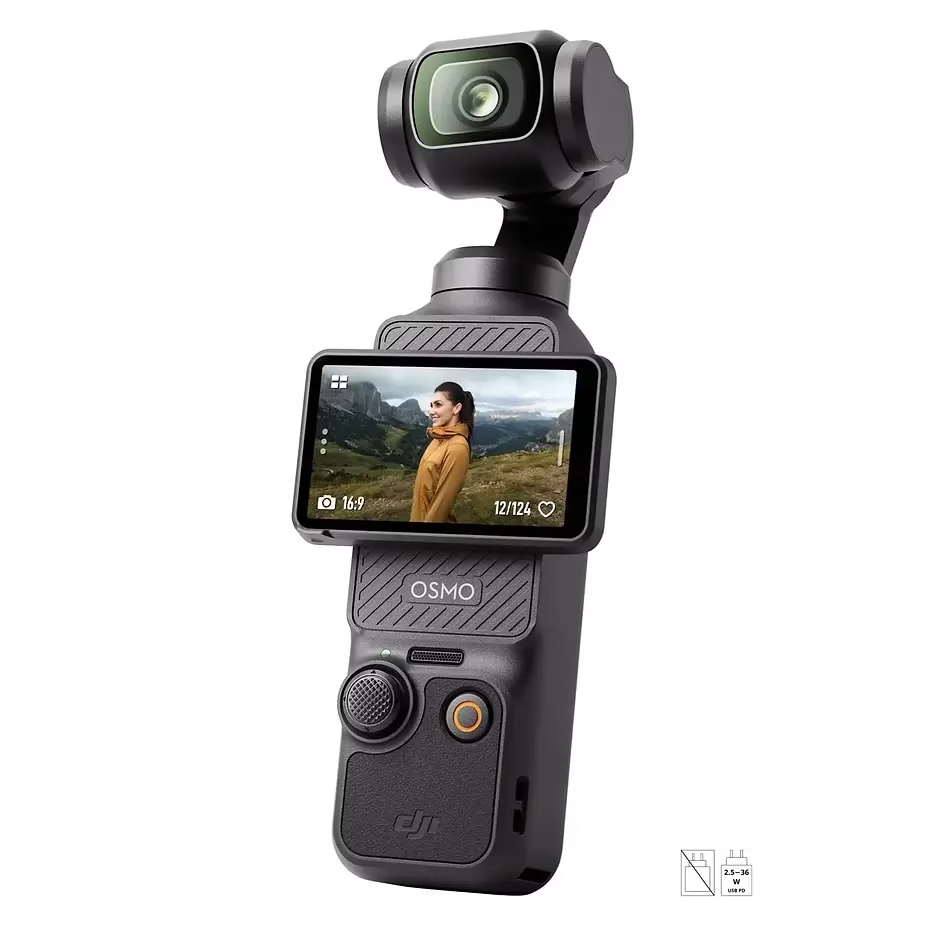

Leave a Reply